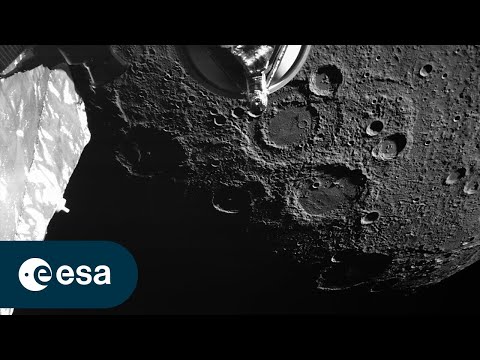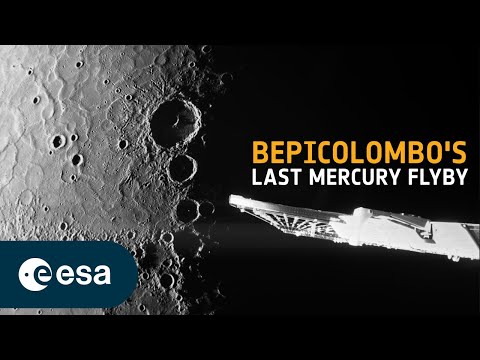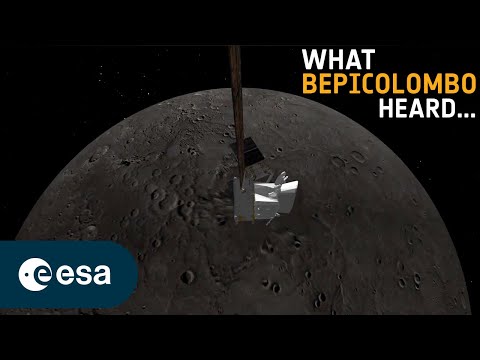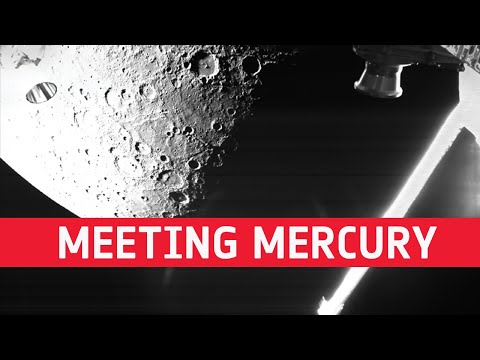ESA Euronews: Setting off to Mercury with BepiColombo
Mercury is a planetary misfit, an oddball in the solar system, and this month the BepiColombo mission is setting off to study it in unprecedented detail.
The best images we have of Mercury are from NASA’s MESSENGER mission, which pictured its cratered surface and curious features earlier this decade.
Soon, the joint European and Japanese BepiColombo mission will head there to take an even closer look.
Watch the launch of BepiColombo live on 20 October 2018 at 1:45 GMT: http://bit.ly/BepiColomboLaunch
Learn more about #BepiColombo: http://bit.ly/ESAsBepiColombo
This video is also available in the following languages:
German: https://youtu.be/yElZ1NHcgdY
French: https://youtu.be/8sWBo1z170U
Italian: https://youtu.be/nKXiF71RClQ
Spanish: https://youtu.be/GERlq_9J3-I
Portuguese: https://youtu.be/7PY9Wgi72oI
Greek: https://youtu.be/36BKw7iubLI
Hungarian: https://youtu.be/tDDk7nNcpfI
★ Subscribe: http://bit.ly/ESAsubscribe
Check out our full video catalog: http://bit.ly/SpaceInVideos
Follow ESA on Twitter: http://bit.ly/ESAonTwitter
On Facebook: http://bit.ly/ESAonFacebook
On Instagram: http://bit.ly/ESAonInstagram
On Flickr: http://bit.ly/ESAonFlickr
ESA is Europe’s gateway to space. Our mission is to shape the development of Europe’s space capability and ensure that investment in space continues to deliver benefits to the citizens of Europe and the world. Check out http://www.esa.int/ESA to get up to speed on everything space related.
Copyright information about our videos is available here: http://www.esa.int/spaceinvideos/Terms_and_Conditions





I wonder why they use reflecting material to keep the heat out of the instruments, but don't worry about the heat during their journey! Whether their is no heat transmission at all or their whole project will melt pretty soon… Sorry esa
Damn, we have to wait seven years? I hope I live long enough. Orbital dynamics are a bugger. Go for it you little beauty.
4:28 ( ͡° ͜ʖ ͡°)
The issue at hand here, and why it's so cool that we might finally find out, is that we're pretty sure at this point that Mercury is likely an oddball, something or several somethings significantly altered it during its formation. It's the how and why we have no idea about. It's how those alterations happened, and what they were that will really determine and constrain the model of rocky planet formation we're trying to build.
Mercury is truly what one might call an iron planet, it's core is absolutely immense – in fact it's even larger than we thought and before Messenger we thought it was ~55% of the planet's radius – the core is now thought to occupy ~85% of of Mercury's radius and contain between 75 and 90% of the planet's mass, depending on the amount of sulfur alloyed with the metals of the core – for comparison the Earth's core is only 17% of it's radius and maybe one third of the planet's mass at most. None of the other non-icy terrestrial bodies in the solar system – the other 3 inner planets, the moon, Vesta or Io – have anywhere near this much mass and volume in the core. In fact this immense density means that while Mercury is only 77% the diameter of Mars and roughly half it's mass, their surface gravity is essential equal with Mercury's being only slightly less at 3.70 m/s^2 to Mars' 3.71 m/s^2.
Now Earth itself has a slightly over large core, and is slightly denser and heavier that it should be compared to Venus and Mars. Venus is 94% the Earth's physical size but only weights about 81% as much, Earth is about 7 to 9% heavier that it should be. Most think the blame here lies in the aftermath of the moon forming collision when Earth and Theia – it's Mars sized co-orbital fraternal twin – wacked into each other. Theia was completely disrupted and most of it's core would have been absorbed by the Earth leaving it with a larger and heavier core.
But what ever happened to Mercury was probably different, theories vary from an ~2x larger Mercury being broiled by the baby Sun's tantrums which boiled off the original crust and much of the mantle, a giant impact striping much of the outer layers from the planet or the baby sun just being so hot that many of the silicate material not to mention the actual volatiles (water, sulfur, oxygen, low boiling metals etc.) were just blasted away from the environment where the baby Mercury was forming, basically restricting what the planet could make itself out of. It has a massive core of iron because that was one of the primary things available to it in the volatile deprived region it formed in.
Hopefully this project will give us a clue as to what really happened.